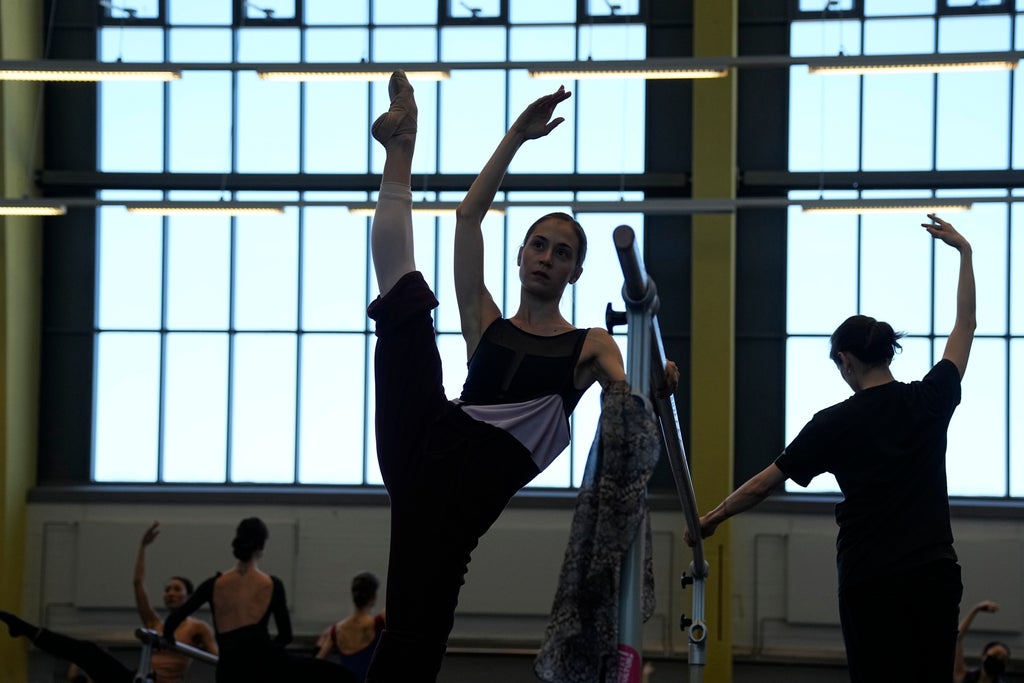
Dancers who have fled Ukraine — and Russia — due to the war have found a new temporary home in Berlin's top ballet company, which helps with practice space, housing, and even shoes.
About 200 dancers in all, including many who are considering fleeing to Germany, have turned for assistance to the capital's famous State Ballet.
Christiane Theobald, the company's acting artistic director, said Wednesday that it is crucial for those refugees to keep up their regular practice, even if they don't have any public performances right now.
“The important thing is that the daily training can be completed, because training is like brushing your teeth," she told The Associated Press. “And the tragedy is that if you have phases where you can’t do that at all, then you can never make up for it.”
At the same time, Theobald said she's been contacting other company directors across Europe to see if she can help find the uprooted dancers new jobs.
“What we need now, of course, are positions in ensembles, and those who are coming ... are mainly classically, highly classically trained dancers," Theobald said.
While there are about 70 dance ensembles in Germany, not all of them are so exclusively focused on classical dance like most of the companies in eastern Europe, but often practice modern dance too. So it will take adaptation by the new dancers to study and get used to the different, western European styles.
On Wednesday morning, more than 30 dancers were practicing their moves at a workout room in Berlin — among them eight refugees, including two Brazilian dancers who had fled from Russia recently.
Many arrive in Berlin without anything and are now getting lots of practical help from the Berlin ensemble — anything from dance shoes to housing.
“You have to imagine, these are people who have left everything behind, they have very little with them. That starts with the pointed shoes," Theobald said.
Because the situation is so dynamic, with many dancers reaching Berlin and then some quickly moving on to other destinations, the company said it was difficult to say how many exactly had received help already.
Those escaping Ukraine include people from all over the world who used to dance at ballet companies there. Those from Russia no longer want to be exposed to President Vladimir Putin’s increasingly oppressive regime.
State Ballet's principal dancer Iana Salenko, who is from Ukraine herself but came to Germany in 2005, has also been helping the new arrivals. Through her personal network, she's been trying to get them auditions at ballet companies across Europe, but also has shown them opportunities in other fields of employment such as the opera.
“Of course, it's not me alone — many other principals in Europe are trying to help this group,” the 38-year-old said.
More than 3.5 million people have been flooding into Europe escaping the war, and almost everywhere they've been welcomed by an outpouring of help and solidarity.
Germany has registered almost 240,000 Ukrainian refugees, although the real numbers are expected to be much higher since they don’t need a visa to enter the country and federal police only keep records of refugees arriving by train or bus. Those entering from Poland by car usually are not registered.
Salenko, the principal dancer, has also been sharing the refugees' worries about their families back home in the war. While she and her mother are safe in Berlin, she worries about her father and brothers back in Ukraine and talks to them on a daily basis — just like the dancers who recently fled to Berlin.
Theobald said even though there were dancers from many different nations practicing together in Berlin, including Ukrainians and Russians, there were no tensions within the ensemble as a result of the war.
Salenko, too, stressed that the war did not manage to divide the dancers but instead drew them together as they try to maneuver the horrible situation.
“This situation, I find that it’s made us move closer, more together," she said.
___
Kirsten Grieshaber in Berlin contributed.







